![]()
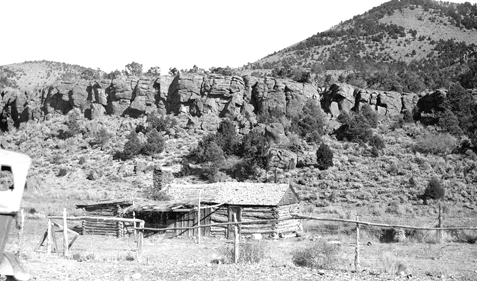
Taken by Frank Crampton when he found the cabin in 1908
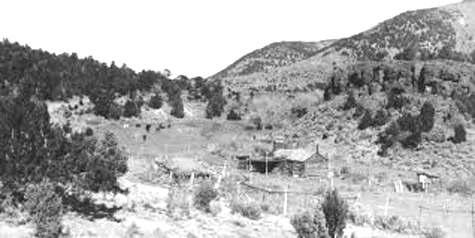
Probably also taken by Frank Crampton in 1908
The story of the Joshua Ward cabin. The Joshua Ward Cabin is where the bodies of Joshua Ward, his wife Abigail and their two little girls were found in 1908, locked inside the cabin 30 years after they were murdered by Indians. Their ore wagon was full of rich silver ore and was sitting outside the cabin. The following paragraph is speculation.
The day was warm as the unrelenting sun beat down on Joshua Ward. It had been a productive trip to his silver mine. After a few days rest he would sell the rich silver ore and could finally buy that team of horses he needed. Hard work and persistence had paid off and he was feeling the contentment of a job well done. After filling the buckets with water at the spring, he headed back to his cabin and family. Suddenly, he felt a searing pain in his back. Staggering through the cabin door, he realized the cause of his pain. Four arrows were buried deep into his back. Once inside, he quickly barred the door with the last of his remaining strength then slowly sank to the floor, breaking the wooden arrow shafts as he fell mortally wounded. Across the room lie the lifeless bodies of his wife Abigail and two daughters, Sarah and Phoebe. (end of speculation)
With the death of this family another lost mine story was born. The mine was not just a figment of a lonely prospectors imagination. It was and is to this day, a silver vein that assayed at an estimated thousand dollars a ton at 1908 silver prices. The story is supported by verifiable facts and confirmed by Frank A. Crampton who was a self taught mining engineer with impeccable credentials.
Frank Crampton was born in 1888, to a prominent New York City family. He grew up with all the social amenities befitting his family's wealth, but Frank had a restless nature and at the age of sixteen he left home. He learned to "Ride the rods" from his new found friends, John Harrington and John T. Sullivan (Sully). Harrington and Sully educated the young Crampton in the hobo lifestyle and introduced him to hard rock mining. Over the years, Frank Crampton became well versed in the art of mining and built a reputation for honesty and hard work, believing nothing was worth while that wasn't earned the hard way. During a business trip to Boston in 1908, Frank was approached by Massachusetts politician Herman Hormel and Dr. J. E. Meyers. Hormel's relatives had not been heard from for thirty years and he wanted Crampton to find them. The last known contact with Joshua Ward was a letter. It was mailed from Cherry Creek, Nevada, on August 12, 1878. Early inquiries of law enforcement agencies and post offices in the area revealed nothing of the family's whereabouts. Hormel produced several letters written by Abigail Ward, which provided several clues. She described an L-shaped cabin with an adjacent ox barn they had built in the wilderness near Cherry Creek. She further described the location as being in a small, narrow, basin-like valley with cottonwood trees and a spring at one end. Joshua had built a road to the cabin, which came over a ridge past the spring at the upper end of the valley. Included in the letters was a crude map. The map showed the cabin with an arrow pointing south to Hamilton; an arrow pointing east to Cherry Creek; an arrow pointing north to Humboldt; and an arrow pointing west to Eureka. No distances were noted with the exception of "Eureka, six days". One letter told of Joshua leaving for two weeks to mine one wagonload of silver ore and of his return home. This led Crampton to believe the mine was somewhere within a ten mile radius of the cabin. It was his theory that if the mine had been closer, Joshua would have returned home each night. After studying the letters, Crampton decided the cabin was located about eighty miles north of Eureka. He surmised the cabin was closer to Cherry Creek than Eureka, for it was at Cherry Creek that Joshua bought his supplies. Frank sent a telegram to his brother Ted in Date Creek, Arizona, instructing him to buy a reliable vehicle and enough supplies to last for one month. After arriving in Ely, Nevada, eight days later, Frank and Ted immediately set out north for Cherry Creek.
Cherry Creek is a small town about forty-five miles north of Ely. When Ted and Frank arrived in 1908, it was at the tail end of its third mining boom. After talking to the locals and obtaining as much information as they could, they left in search of the cabin.
Nearing mid-afternoon, they came across the very dim outline of an old road following it until they came to a deep wash that cut across the road. As they continued on foot, the road became more visible on the opposite side of the wash. Some twenty miles later they spotted a cabin about a mile off in the distance, but nightfall had descended upon them. They decided to make camp and put off investigating the cabin until morning. Early the next morning they broke camp and headed toward the cabin, apprehensive of what they might find. Passing a spring they came upon a wagon, its wheels sunk into the soil to the hubs. It was obvious it had been there a very long time. Its cargo of rich silver ore lay on the ground below broken sideboards. Nearby in a small shed they found the bleached bones of two oxen, their skulls crushed by the blow of a heavy object. As they continued on toward the cabin, they could see broken arrows imbedded in the door of the cabin. Frank tried to force the door open but it would not budge. They broke through the top section and it became apparent why the door would not open. There were three bars holding it fast. Reaching inside he removed the bars, opened the door and entered the cabin.
Once inside, his worst fears were confirmed. Underneath thirty years of hardened dust were the mummified bodies of the Ward family. Joshua was on the floor near the door with the broken arrow shafts still in his back. Abigail's body was across the room on the bed, her skull crushed by a single blow. The daughters, Phoebe and Sarah, were near the bed on the floor having suffered the same fate as their mother. The family had laid untouched for thirty years. Why the Indians had not forced their way back into the cabin forever remains a mystery.
Snow had begun to fall. Frank and Ted had to complete their business quickly and return to town. They searched the cabin for papers and personal items they could send to Hormel. During the search they loosened a stone in the fireplace and behind it they found $5000 in gold coins. Joshua's mine had been paying well. They repaired the door and carefully closed up the cabin before they headed back to Cherry Creek. Winter was quickly closing in and they would not be able to return until spring. After a difficult trip back to Cherry Creek, Frank sent a message to Hormel advising him of their find. Frank and Ted settled in for the winter and on Hormel's arrival in the spring, they headed back for the cabin. The bodies and personal effects were removed and the bodies were sent back east for burial. Frank searched for the mine over the next few years but to no avail.
NOTE: We have been looking for the location of this cabin for many years. Although we doubt the cabin still stands, we would like to document the site and pay our respects to the Ward family. We are posting this page in an effort to exchange information with others that may also be searching for this cabin. Many have claimed on the Internet and/or YouTube that they have located this cabin. Some have even posted GPS coordinates. We have done extensive air and ground searches using any and all information we can obtain. As of September 2012, we have not located the site.
The pictures below are from our 2012 search. The location is at N39.9722 latitude, W115.3064 longitude (N39.58.19 W115.18.23) and was provided by "DesertPhile" on YouTube and in a personal e-mail. We first flew over this location in 2010 and could not find the cabin or the obvious rock face seen in the Crampton photos behind the cabin. After checking out other possible locations, we decided to personally visit DesertPhile's location and see things up close for ourselves. We did discover Cottenwood trees, the remains of a small cabin, remains of a corral, animal bones, and Indian arrowheads. Missing were the rock faces in the Crampton photos and any signs of an "L" shaped cabin large enough for the Ward family. We will post the results of future searches here.
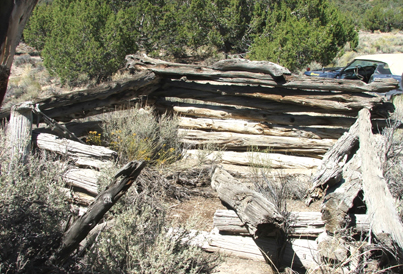
This small Cabin is the only one we found in the area

The remains of a Corral
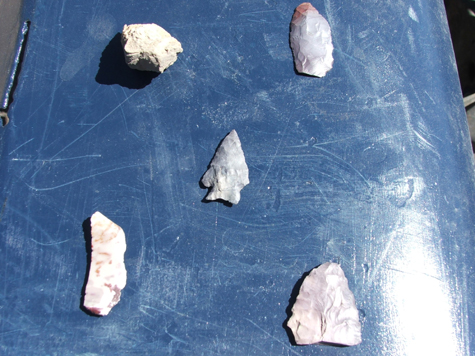
The Arrowhead is in the center
The others are either unfinished Arrowheads or Tools
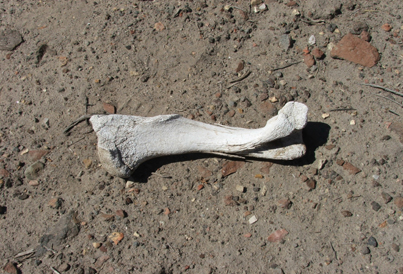
Is this a bone from an OX?